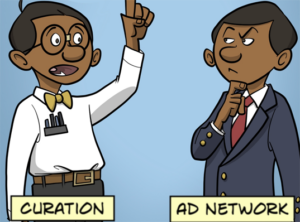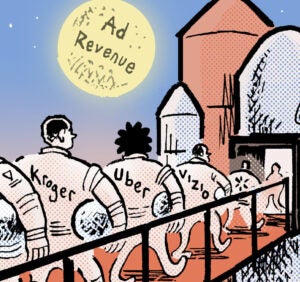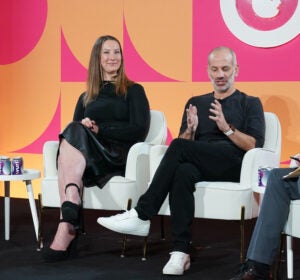 “The Sell Sider” is a column written for the sell side of the digital media community.
“The Sell Sider” is a column written for the sell side of the digital media community.
Today’s column is written by Lorne Brown, CEO at Operative.
There’s a lot of talk that programmatic advertising brings more money and less overhead cost to an organization, leading to publishers rapidly expanding their programmatic channels. By 2016, eMarketer predicts, 63% of digital display will be programmatic, up from 24% in 2014.
“Programmatic” as the term is currently used may refer to anything from exchange-traded inventory to spot TV buys. That said, the rapid growth predicted by eMarketer will come from types of automation to increase the efficiency of sales operations, rather than more publishers dumping remnant inventory in exchanges. A major driver will be programmatic direct, a compromise of sorts between fixed-price direct sales and exchange-traded remnant inventory.
Programmatic direct and other offerings that help direct sales are where publishers can gain the most value. There is a widespread fear and mistrust of “automation” on the sales side, but in reality it’s what enables salespeople to put their best foot forward and spend their time on high-ROI activities.
To keep pace with the future of digital sales, publishers should take a holistic look at their inventory and consider an integrated approach to automating their advertising business. This means ensuring that their direct and programmatic sales not only coexist, but also intertwine.
Standard Programmatic Inventory Shouldn’t Mean ‘Bad Quality’
As brands continue to demand high-impact, unique advertising solutions, “standard” inventory is quickly diminishing in value. Buyers are reluctant to pay high CPMs for leaderboards and skyscrapers when they are so readily available in the marketplace.
While this is the obvious first set of inventory to be pushed to programmatic channels, often through a supply-side platform, it shouldn’t feel like the place remnant inventory goes to die. Publishers should think about offering unique audience targeting opportunities. Some publishers are starting to create their own “audience trading desks” to differentiate from the large data marketplaces, charging more premium prices as a result. Publishers should also take fraud issues seriously. One bad audience extension buy through a programmatic channel could hurt future, more lucrative deals on the direct sales side.
Automation Does Not Mean ‘Replaced By A Robot’
The last thing publishers want is for their best sellers to feel like inventory is being taken away from them or that their jobs are redundant. Advertisers will pay a premium for creativity and contextual relevance, and will always want to experiment with new technologies, channels and targeting options that aren’t available through a programmatic partner.
Programmatic direct technologies, such as AdSlot or ShinyAds, offer publishers a good opportunity to introduce direct sellers to tools that decrease tedious tasks, freeing them up to think about better custom offerings or make new deals. The sellers that embrace this will come out on top.
Waterfall Selling Must Become Data-Driven
The “waterfall” approach is often a bit of a hyperbole. Publishers typically let direct sellers complete sales and divide what’s left across a soup of barely differentiated partnerships. It’s almost impossible to really know who’s delivering the most value across these other channels, and the price gap between direct sales and the rest is severe. Publishers need to do two things to better intertwine their offerings.
First, they need to kill the blind “waterfall” approach to selling and think of direct and programmatic channels as one pool of inventory to be sold at the best price possible, including when its bundled with premium sales. To save time, sellers should be trained on the technologies that drive the best packaged sale for clients.
Next, publishers need to perform some well-orchestrated A/B tests with vendors to find the best mix as part of a strategy that involves shifting to a more agnostic, data-driven approach.
Yield managers or partners can help build, execute and maintain a strategy like this. Since it may require an organizational restructuring and a new approach to direct selling that includes yield management and dynamic inventory packaging, there is a lot to prepare for.
Automated ad sales should be a single piece of a larger, integrated business strategy. The benefits of programmatic will not come from funneling inventory through an open exchange and eliminating talented team members, but rather from the elevation of the team’s output.
Follow Operative (@Operative) and AdExchanger (@adexchanger) on Twitter.














